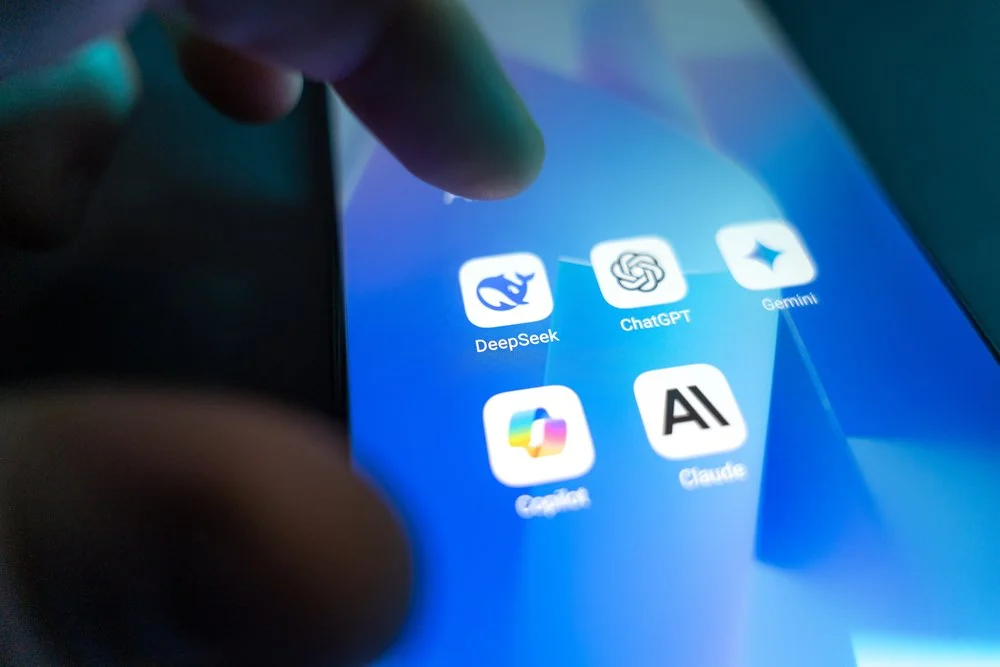How to ask for sponsorship and get a yes (plus, what sponsors really want in return and how to get sponsorships on auto-pilot)
Updated: Fall 2025
Events are a staple in the nonprofit world, and corporate sponsorships serve to shoulder some of the expense while also building community relationships that extend far beyond the life of the event. Unfortunately, many nonprofits take the wrong approach when seeking corporate sponsorships. They focus on the wrong things, communicate poorly, and think too short-term.
The good news is that plenty of opportunities are available to raise those sponsorship dollars if you can approach the situation differently.
Instead of blindly sending out emails asking for sponsors to give you money with the promise of including their logo anywhere and everywhere you can think of, you can put together a thoughtful proposal that focuses more on what you have in common with the company and how a partnership will be a value-added experience for both of you.
To set yourself apart from other nonprofits asking for sponsorship dollars, you have to start thinking about the company more than you’re thinking about your own event. In other words, when you put the focus on the company, you’ll start speaking their language and demonstrate the value of investing with you.
This guide will walk you through what it looks like to the company at the center of your sponsorship process, preparing before you ask for money and ensuring that future events are sustainable with repeat sponsorships on auto-pilot.
So what does this look like? Since I’ve been on both the asking end and the receiving end of this conversation, let’s look at the following components of nonprofit event sponsorship:
Understand the difference between corporate sponsorship and a corporate gift
Explore questions to ask yourself before you ever ask someone to be a sponsor
Determine what to offer as a sponsorship benefit or perk, considering what sponsors really want in return
Effectively communicate before and after the pitch for sponsorship to set your organization up for repeat sponsors
A quick note for business owners: If you’re on the corporate end of this equation, communicate with your local nonprofits asking for help, and be upfront with them. I’m working on a guide for you (coming soon) but for now, focus on partnering with your community over trying to squeeze advertising opportunities out of every sponsorship. You are no stranger to corporate events, and your insights into this process can be very valuable for nonprofits. And, if you’re just starting an LLC, keep this approach in mind as you launch your new business!
Defining sponsorships: What is a corporate sponsor?
A corporate sponsor is a business that gives either financial resources or tangible items for the specific purpose of underwriting the cost of an event. In most cases, corporate sponsors expect some form of recognition in return for their donations. This differs from an outright corporate gift which is treated like a regular donation under charitable tax laws. It’s essential to communicate with the sponsoring company about the tax implications of corporate sponsorship and consult your tax advisor about the deductibility of the sponsorship.
What do companies want in return for their sponsorship?
Our Sponsorship Template includes a Benefits Chart you can customize with your unique sponsorship benefits. [Learn more about the template here]
WAIT!
Instead of blazing into someone’s email inbox promising logo placement everywhere you can think of in exchange for a tiny sponsorship amount, consider taking a more analytical approach.
The list of what companies actually want in return for their sponsorship dollars is usually fairly simple:
Companies want exposure. They want people to see their generosity in action.
Companies want relevant recognition. (More on that below)
Companies need data to support their investment. This is crucial for securing repeat sponsorships.
Companies want good communication. You’re asking someone to give you a portion of their profits. The least you can do is keep them updated.
How to ask for sponsorships: Four questions to consider before you make the ask
I know that for many reading this post, you’re already passed the point of needing event sponsors. You want to move on with event details and meet the printer deadlines. You really want to fire off those emails asking random companies for gifts. (No judgement here!) But when you rush to ask, you’re more likely to overlook better-fit sponsors, accept less revenue in exchange for quick wins, and sacrifice future sponsorship dollars for the sake of crossing it all off your list.
Before you put together a list of sponsorship benefits or ask for a single dollar, ask these questions first:
Which local companies are our event attendees most likely to support?
The biggest value you can offer is to show your sponsor’s generosity to their audience, not to yours.
What out-of-the-box ideas can we offer that are valuable to the sponsor?
Don’t offer what everyone else does - give them something unique to your nonprofit.
Where does the company currently advertise, and how can I use that information to help me secure a sponsorship?
This will be really valuable when it comes to saying thank you…
What data do I have that can be used to support my case for sponsorship?
This could be website analytics, social media reach and engagement, email list subscribers, etc.
Sponsor benefits: examples for what to offer corporate sponsors
Remember that list above of what corporate sponsors really want? Let’s keep that in mind once you have answered the pre-ask questions. Then, you can begin to re-think the benefits you’re prepared to offer. A few to consider include:
Customized thank you ads: Dedicate a portion of your event proceeds to thank you ads and place ads in the places your sponsors advertise (i.e., in front of their audience, not your audience)
Email Newsletter Shout-Outs: Give prominent exposure in mass emails to your email list (and even better if you can only include one sponsor/partner in each email).
Website Recognition with data: Offer to include their logo and message on your website and then add value by including how many website views you anticipate receiving during the event promotion period.
Early Exposure: Include logos on your event registration landing page.
Virtual Creativity: If your event is virtual, add their logo to your virtual Zoom background or your slide deck if you’re using Facebook Live. Most options allow you to showcase sponsors prominently on the screen, and you can be very strategic about using calls-to-action for sponsors in the comment feed.
Social media recognition beyond the logo: Instead of just saying thank you on social media, consider rotating sponsor logos and messages on your Facebook Event cover photo and spotlighting them (and tagging) in your event discussion posts. Plus, and I can’t stress this enough – don’t just post their logo and say thank you. Write a short blurb about their business, what they do, and who they help and make the post about them! Then, tag them in the post so they can share it.
Radio advertising: Offer sponsors a 30-second radio spot and incorporate the radio ads into your event promotion. Frequently, radio stations will offer deeply-discounted advertising rates to nonprofits promoting an event.
My favorite idea: A personal visit → Invite some of the company’s employees to tour your nonprofit and better understand what you do - by treating them like VIPs, you’re thanking them for investing in your community. If you can arrange for them to meet a client, a loyal volunteer, a board member, or someone else who directly benefits from your services, this will be a big plus. (In a post-COVID-19 era, a Zoom tour or meet-and-greet is more than okay!) Instead of just offering to include a logo as recognition, also include a short message from the company. This additional context lets the company have some editorial content and branding.
Get creative with table decor if your event is in person — include an item the company sells on each table along with a table sign with their logo. (Ask the company if you can give the product away to someone at the table at the end of the event).
Free tickets: For in-person or online events, you can offer a certain number of free tickets to the sponsors.
Virtual and tangible gift bags: If you typically offer gift bags, consider making them virtual instead! Package up all the online benefits (promo codes, coupons, gift cards, etc.) and email those out in a well-designed virtual gift bag email!
Ask them what’s missing: My sponsorship proposal template includes a section that says, “What are we missing?” which encourages companies to request a specific type of recognition. Typically, these requests will be straightforward but earn you a ton of goodwill with the company. This section is also an area where you can explore in-kind gifts as sponsorships versus cash donations.
Communicating with sponsors before and after the event - don’t forget the thank you letter for sponsoring an event
It’s no longer enough to send a proposal blindly to someone’s email, hope they open and read it, request a check, and send it to you. While it might happen as a fluke now and again, nonprofits need to be much more strategic if they hope to raise serious money from sponsorships. So how do you communicate with sponsors to ensure you’re building a relationship and not just conducting a transaction?
Our Sponsorship Template bundle includes a three-page post-event impact report template you can customize in Canva! [Learn more about the bundle here]
Before you send a proposal, make contact. This pre-ask contact can be in person or over the phone, but you need to establish that you’re working on an upcoming event and would like to talk to them about how they can partner with you. Once you have permission to send the proposal, the chances of them accepting the proposal are much higher. Don’t forget to put in the work — do your homework about the company, find out what’s important to them, and what kind of sponsorships they’ve done before.
When you email the proposal, be brief. This stage is not the time to use words like “maybe” and “if you can.” Be direct about what you want; always attach the proposal as a PDF for easy viewing. If you’ve answered your questions in step one and crafted a valuable recognition opportunity focused on the company in step two, your likelihood of receiving a yes is much greater!
After you get the yes, over-communicate. Tell them what you need next and when you need it — logos, messaging, etc. Your job is to make it easy on them and give them a wonderful experience. Where possible, use your website to offer an online commitment form, so it’s super simple for the company to upload its logo, pay online, etc. If you must use a paper commitment form, double-check it has everything you need from the sponsor.
After the event, follow up. Let your contact know how it went if they couldn’t attend, send a photo, stats about website views, social media reach, etc. Leave them with an impression of how valuable their investment was - to you and them. And don’t drop off the face of the earth and never communicate again! Add the company contact to your email list and send them quarterly updates about your work — this will make it 10x easier to get the next sponsorship!
If you’re really looking to make a great impression, considering sending a Post-Event Impact Report to your sponsors. The post-event impact report is a short but effective way to demonstrate the impact the sponsor made on your event. It includes items such as:
Your overall event impact through numbers and narrative
Key outcomes of the event sponsorship dollars and ticket sales
Event Highlights and Testimonials
Social media and website reach
A closing page to highlight future partnership opportunities
This kind of report will elevate your nonprofit and make your organization memorable! If you’d like to have a template for this kind of report, you’ll find one inside of the Nonprofit Template Library!
Pro-Tip: Want sponsorship letter examples and script shortcuts? Get them inside the Nonprofit Template Library!
How to secure annual sponsors on auto-pilot
If your nonprofit has just a single event or two each year for which you seek sponsorships, it’s probably sufficient to use the method I’ve already described to ask for corporate sponsors. With excellent communication and follow-up, renewing those sponsors from year to year is likely to be easy.
However, if your organization holds multiple events annually (more than three), using an annual sponsorship model may be worth considering.
What’s an annual sponsorship program?
An annual sponsorship program is where you ask one company to sponsor all of the events in the year. The sponsorship cost is typically less than the total sum of all the events, but the payoff is much greater for you.
No asking for sponsors all year long - get it done at the beginning of the year!
Print one set of recognition items - posters, banners, cards - whatever you print, do it once and reuse them for every event that year.
Build better relationships with your corporate sponsors - you’ll be able to focus on a handful of companies vs. constantly seeking new sponsors.
There are really no drawbacks to this method of corporate sponsorship other than the work it takes to find companies that are a good fit for every event. Even then, when marketed as a partner program vs. a one-off event sponsor, the recognition is excellent for the company regardless of the event itself.
Event Sponsors: FAQs
-
While I can’t give you an exact formula, I can tell you that building relationships with local businesses is always your best first step. As a business owner myself, I get immediately turned off by nonprofits who blaze into my inbox, ask for money or sponsorship dollars, and have no idea what I do or whether or not their event would be a good fit for me.
Take your time and do your research. Identify businesses who share an audience with your event audience and make the ask about them — not about you. While many businesses want to be charitable, they also want a return on their investment from sponsoring the event.
Use the information in section one of this post to do your research, craft a compelling proposal, and then make a memorable (good) impression so next year’s sponsorship drive will be even easier! -
Ah, the million-dollar question! I suggest you ask them and avoid getting tripped up on the “everyone needs the same benefits” train. It has never been a rule that every corporate sponsor has to fall neatly into one category of benefits. The more you can customize the perks, the better fit you can find for your ideal sponsors.
Ask them what would be meaningful in return and while you don’t have to promise to meet every request, you can make the effort to meet them in the middle, at the least. You might be surprised what’s important to them beyond logo placement. -
I recommend creating a specific tag or category in your donor database for companies that become event sponsors, as well as tracking them as a separate group in your email platform.
One of the biggest mistakes nonprofits make with event sponsorships is not staying in touch with sponsors after an event. If you have them tagged, you can customize your communications throughout the year and increase your chances of a repeat gift for annual events. -
This goes back to understanding exactly what your corporate sponsor expected from the partnership. Beyond honoring what you’ve promised, it’s always great to give as much public recognition as possible (unless they’ve asked you not to, of course).
My biggest tip is to thank your sponsors where THEIR people will see it, not just yours. For example, if you limit your recognition to your website and social media, their customers may never see it and that’s who they want to impress. Instead, find out where they advertise and thank them in those places. It’s always great to send something physical in the mail as well that they can display in a store if they have a physical location. -
Sending a blind email with no prep work is a surefire way to get a quick no or no response at all. (Sending via DM or social media platforms is also terrible unless you know that’s how they prefer to communicate). I recommend starting with a conversation and following up with a specific proposal designed with the company in mind. If you want to cheat and save a ton of time, you can use my Sponsorship Proposal Template found here.
Final thoughts on asking for sponsorship
The bottom line is that you need to keep the focus on the company - not on you. When they see you deliver on your word, attend your event, or get your email recap, they’ll have no trouble understanding what you do and why you do it and likely become future supporters.
And, if you’re event has moved online or using a hybrid approach…Just because you’ve moved your events online doesn’t mean you can’t still raise some serious cash through sponsorships. You’ll just need to be more strategic in who you approach, communicate better, and deliver on your promises.
Get the templates that make the sponsorship process easy!
Want a shortcut to creating a sponsorship proposal?
If you want some help skipping the design process and crafting the emails, you can grab my Sponsorship Template Bundle over in the Nonprofit Template Library. Here’s what includes:
Sponsorship Proposal Template designed in Canva
Use the pre-made sections for describing your event, detailing your audience, and outlining the sponsorship benefits they’ll receive will help corporations see the value in investing with your nonprofit.'
Customize the Sponsorship Benefits Chart to include all the goodies you plan to include in a sponsorship package
Add your own logos, brand colors, and messaging easily using the free version of Canva. Or, copy and paste the text into a Word document if you prefer!
NEW! A second version is now included that is specifically designed for your next golf tournament! (Read our guide on getting golf tournament sponsors here.)
Email Templates: Stumped on what to say to sponsors before you reach out or during the ask? Use the Guidebook for sample emails that include exactly what to say before, during, and after your pitch.
Customizable Post-Event Impact Report with sections to highlight event successes, testimonials, stats, and more
Google Form template to allow companies to commit online, upload their logo and messaging, and select payment preferences.
Here’s what a recent template shop buyer had to say about this template:
“This template just saved us tons of time, and we landed a yes within one day of sending out our new pitch - thank you!”
You might find these related posts helpful:







